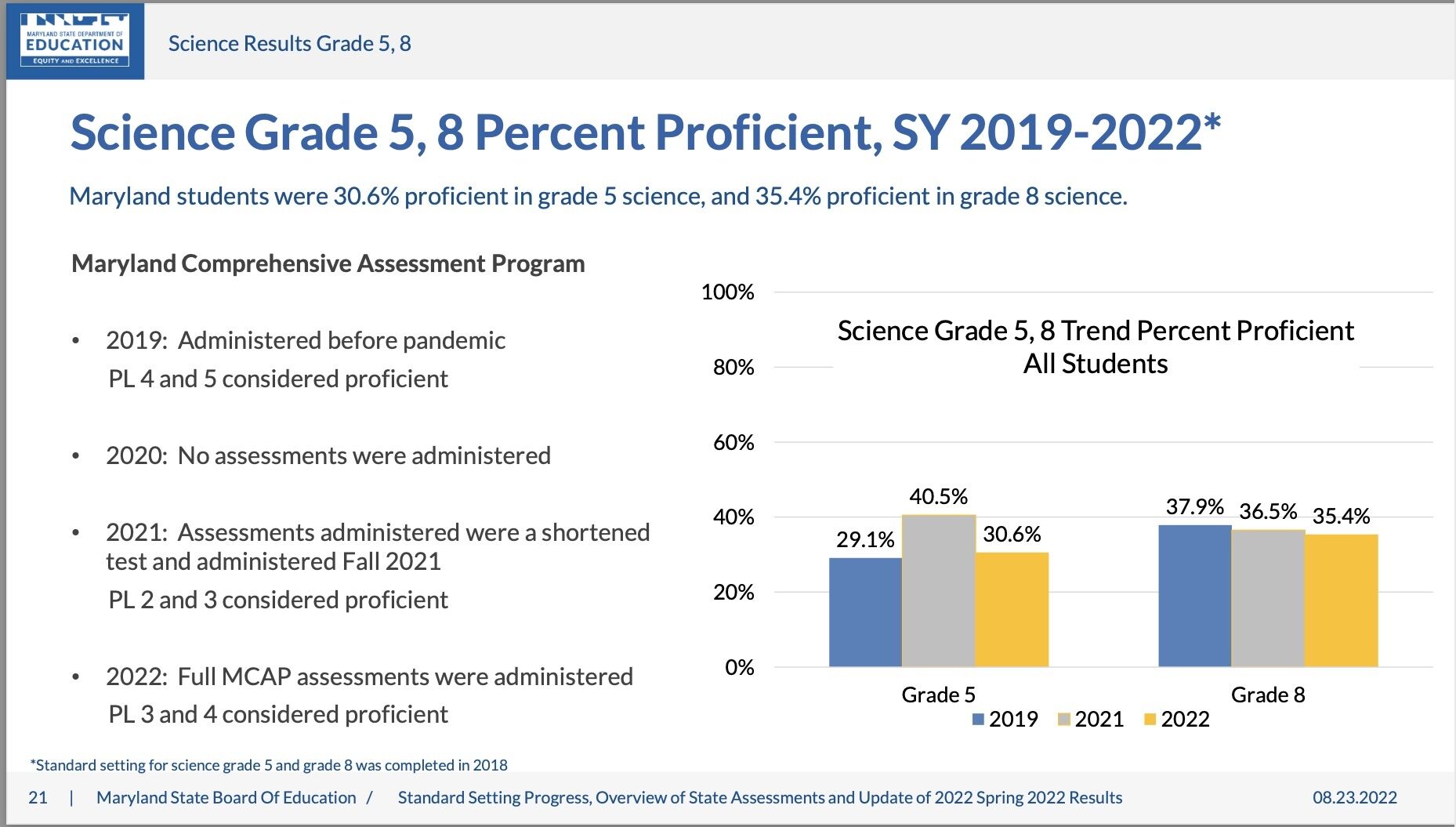

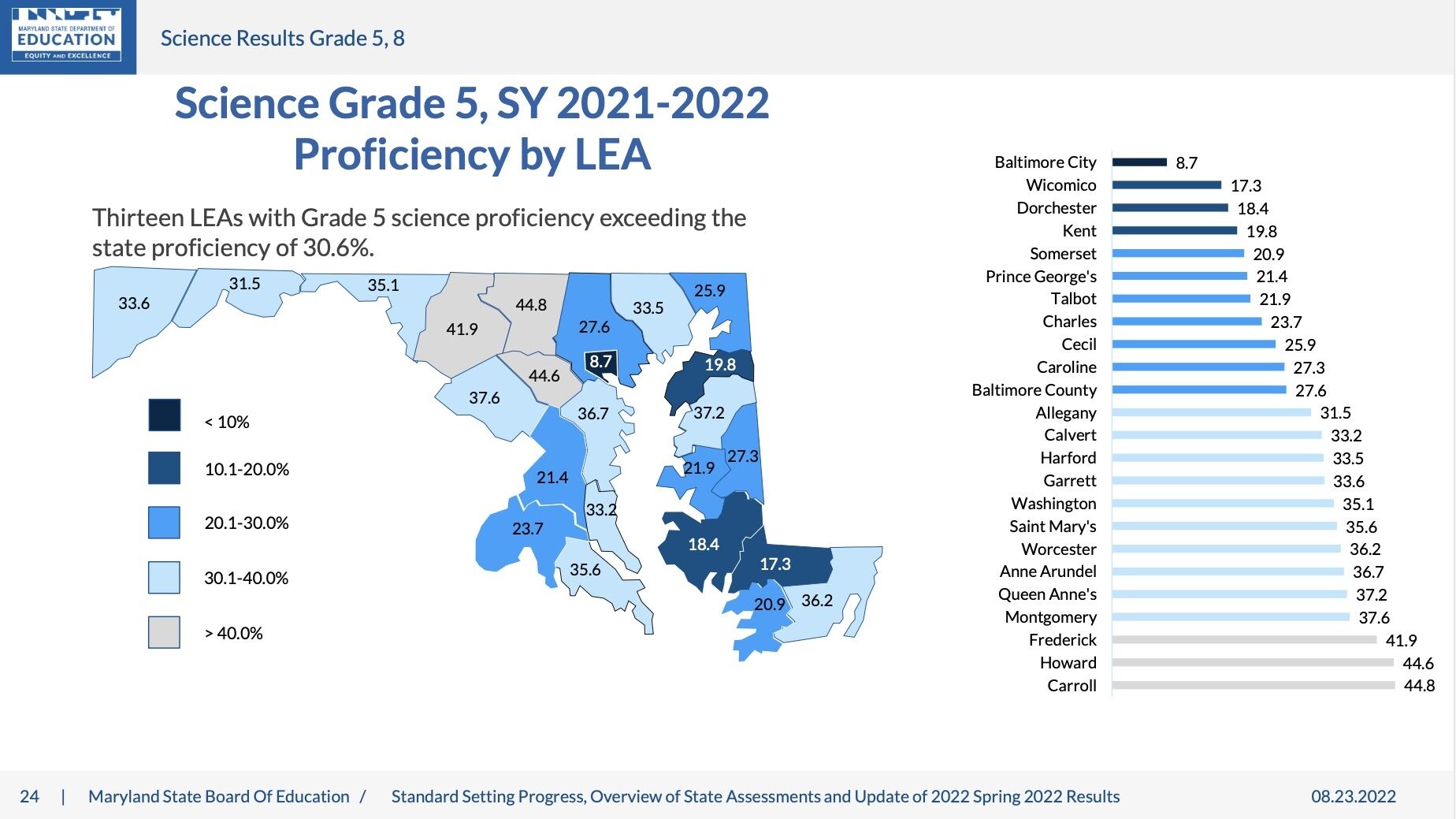
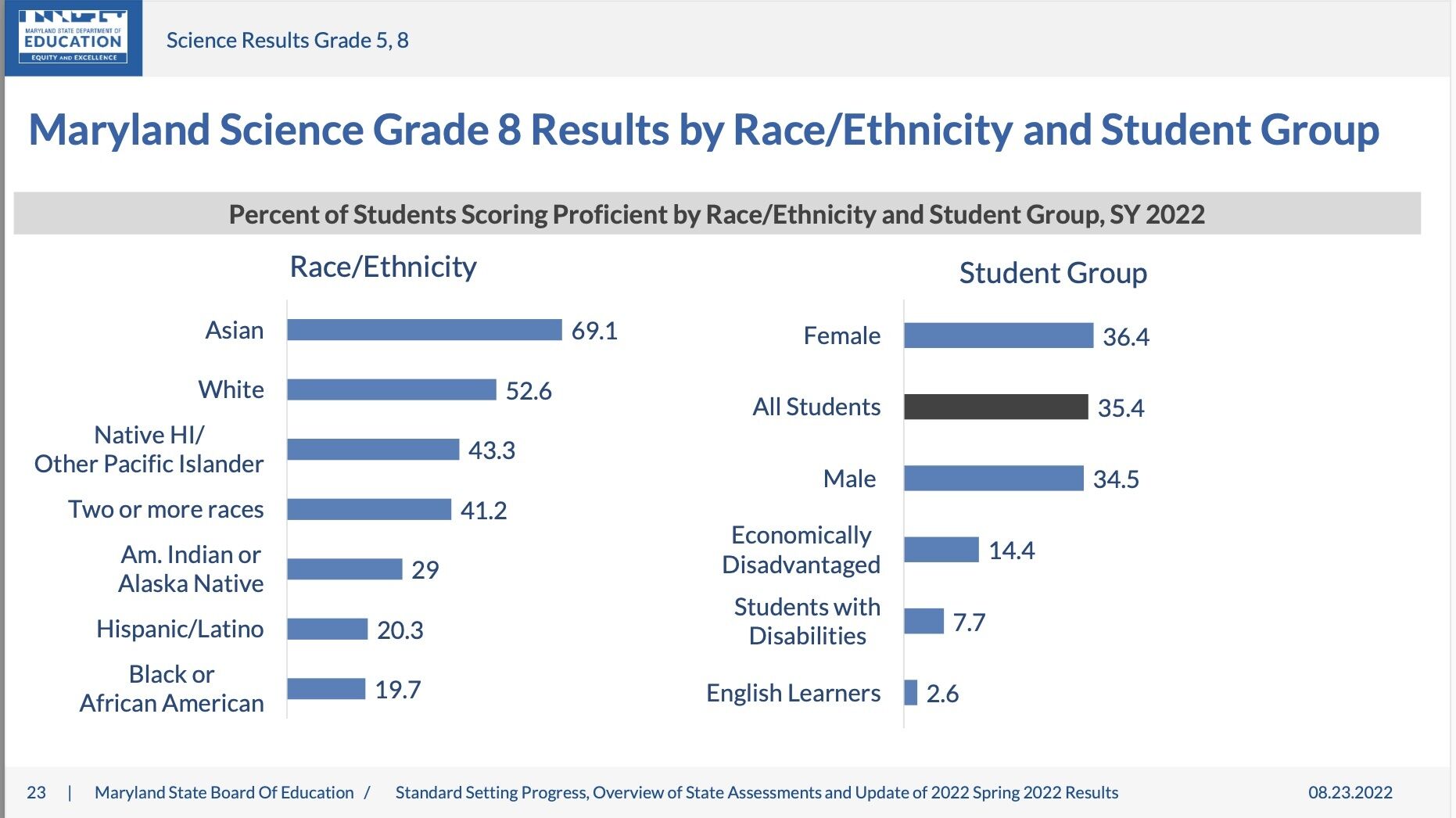
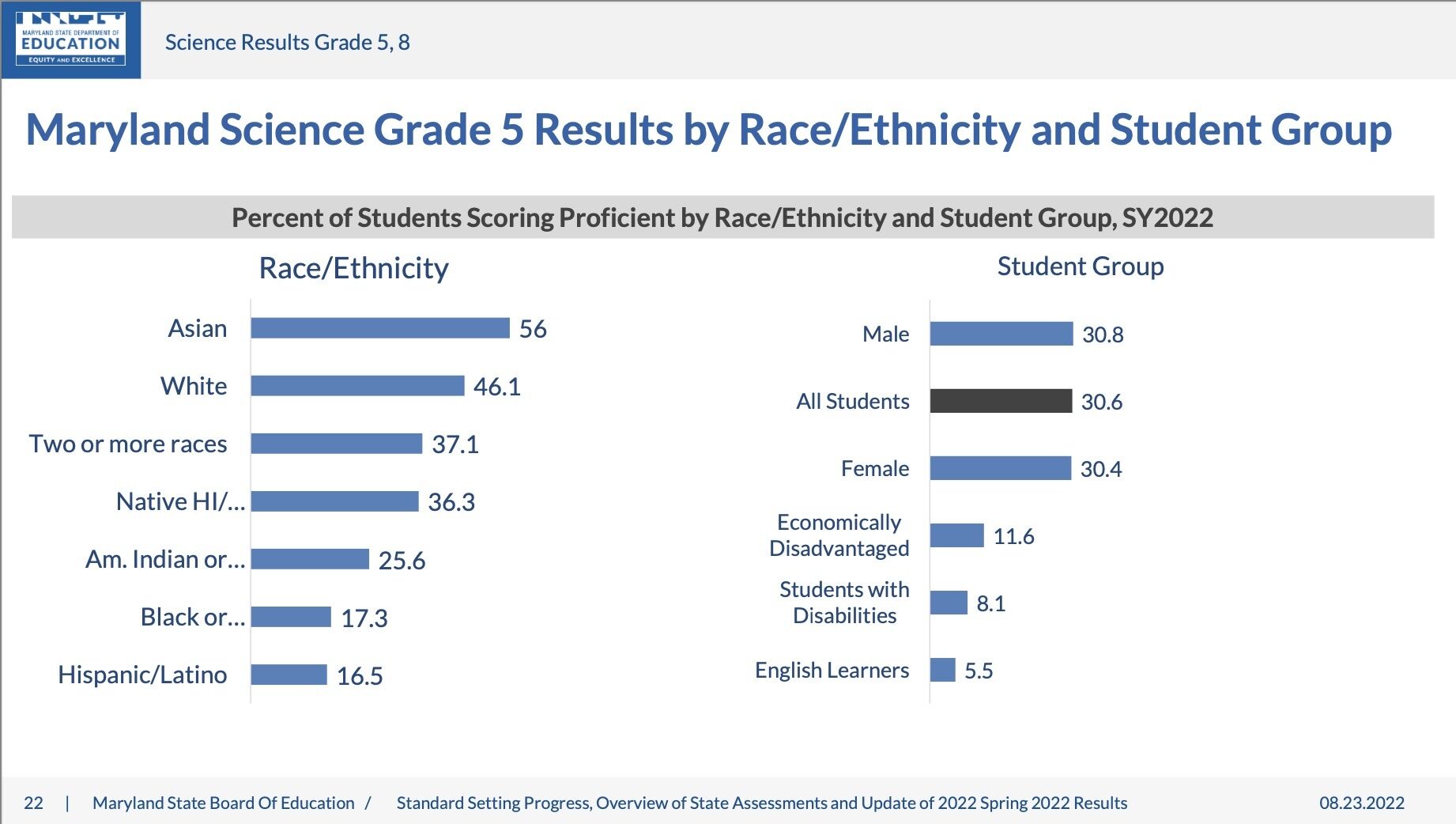
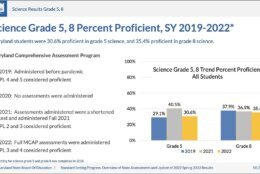

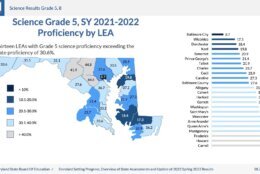
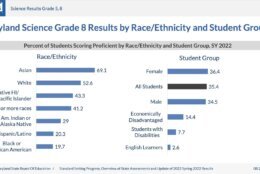
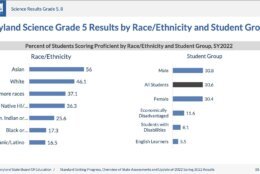
Maryland students are having a tougher time in science class, according to newly released test scores.
This spring, fifth and eighth graders took the science portion of the Maryland Comprehensive Assessment Program test. Of all the students who took the test, 30% of fifth graders and 35% of eighth graders scored proficient in the subject.
Both grades’ scores were down from last year, when 40% of fifth graders and 36% of eighth graders achieved a proficient score.
As the data was broken down into race, some stark differences became clear, as Asian and white students are outperforming Black and Hispanic students.
“The differences between student groups do remain,” said Chandra Haislet, Maryland’s assistant state superintendent.
In fifth grade, Asian students were 56% proficient, followed by white students who were 46.1% proficient. Black students had average proficiency score of 17.3%; Hispanics were at 16.5%.
Eighth grade scores saw 69.1% of Asian students score proficient in science, followed by 52.6% of white students. Again, Black and Hispanic students struggled, with Hispanic students showing a 20.3% proficiency rate and Black students at 19.7%.
Haislet said economically disadvantaged students, and those who speak English as a second language, scored far below other students.
The district breakdown showed Montgomery County fifth graders were above the state average at 37.6% proficient, and 41.9% of Frederick County fifth graders got proficient scores. But only 21% of Prince George’s County fifth graders received a proficient rating.
About 45% of Montgomery County eighth graders received proficient scores on their test, 10 points over the state average. Frederick County saw 42.6% of eighth graders receive a proficient score, while Prince George’s County students once again struggled, with 21.8% of eighth graders receiving a proficient score.
While the numbers can be disheartening, Maryland Schools Superintendent Mohammed Choudhury recommends holding off on judgment.
He said there have been a lot of changes to the testing procedures and grading throughout the pandemic.
Also, there was a lot going on at the time when the students took the test earlier this year, which could have caused the dip.
“We had a horrible Omicron December and January. We still had quarantines. We still had masking and other things. The hope this year is back to that feeling of normalcy,” said Choudhury.
But he is hopeful that this school year’s testing will go better.
“What you’re seeing nationally is, kids are rebounding; I predict our results are going to show that,” Choudhury said. He said the results from spring 2023 are “what I want you to look for, what that new formal baseline is.”







